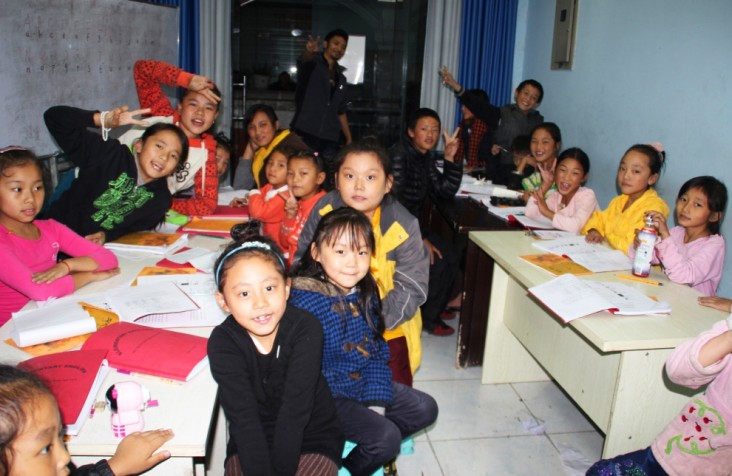
Pema*, 8, is a Tibetan girl who moved with her family to Chengdu, in China's Sichuan province. Like many other Tibetans in China who leave their home towns and villages to go to cities for work and education, her parents brought her along to keep the family together. And like other parents, they wanted her to have exposure to her mother language and culture. But there are few prospects in large urban areas for the younger generation of Tibetans to learn about their heritage.
In October 2013, USAID began Tibetan Weekends, a three-month program in which about 50 primary and middle school Tibetan students living in Chengdu attended classes on Saturdays and Sundays that help young Tibetans like Pema deepen their ties to the culture and enhance their education. Students received lessons about Tibetan language and culture from instructors and experts in Tibetan history, literature and art. The students also had the chance to teach their peers and take English classes, which both proved popular.
The activity, part of the larger USAID-supported Tibetan Sustainable Environmental Resources for Increased Economic Growth project in China, was a collaboration with middle schools and the Gangwa Training Center to help young Tibetans gain a deeper understanding of their language and culture, and instill a love for education. After seeing the program’s success and impact, the association and the schools plan to hold additional activities.
“I like my classes here,” says Pema, who is in the second grade. She starts to recite the Tibetan alphabet: “Ga, ka, gay, nya [a, b, c, d] ....” Her classmate, Kenden, an 8-year-old in pigtails, joins in, in English: “X, y, z. Ha ha.”
*Full names withheld to protect privacy.







Comment
Make a general inquiry or suggest an improvement.